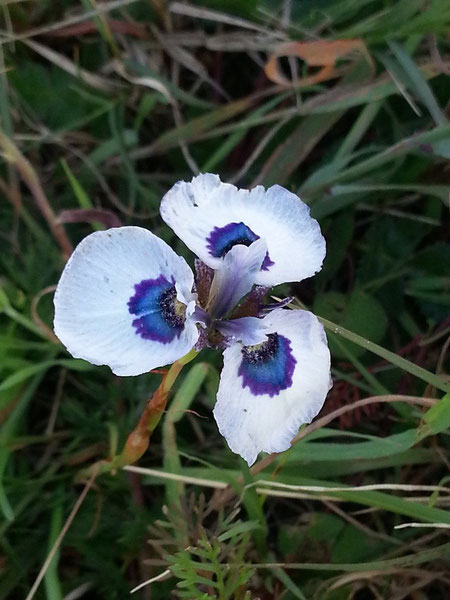Moraea aristata
 Image: © gabymeyer
Image: © gabymeyer
Description
Beautiful unscented white blooms, marked with dark metallic blue and green spot that looks like the eye on a peacock´s feather. Three large white petals are sometimes speckled or streaked with violet. It is pollinated by monkey beetles who are attracted to the striking blue nectar guides located near the base of the three broad outer tepals.Propagation instructions - cuttings
¨Cultivating this species is easily achieved and it flowers prolifically in ideal conditions. The corms are planted in autumn at a depth of about 3 cm in a sandy or clayey medium into which finely sifted, well decomposed organic matter has been added. The plants need full sun or bright light and are most successfully cultivated under cover in deep plastic containers with a diameter of 30 cm, or in deep bulb beds. In temperate climates they can also be grown in dedicated rock garden pockets that are securely lined with wire mesh to exclude mole rats.¨
Propagation instructions - seeds
¨Easily raised from fresh seeds (those harvested the previous season) sown in late autumn in deep seed trays, pots or directly into deep seed beds, in the same medium recommended for mature corms. Seeds should be sown at a depth of 3-4 mm and care should be taken not to sow too thickly to prevent overcrowding and reduce the chances of loss to damping-off fungi. Germination takes place within five to six weeks and seedlings should be allowed to grow undisturbed for two seasons before planting them into permanent positions at the beginning of their third season, during which some may flower for the first time, if well grown. In order to obtain pure seeds from cultivated plants it is necessary to cross-pollinate the flowers by hand as they are self-incompatible¨.
Sources and references
Scientific name
Moraea aristata
Common name(s)
Blue - eyed Moraea
